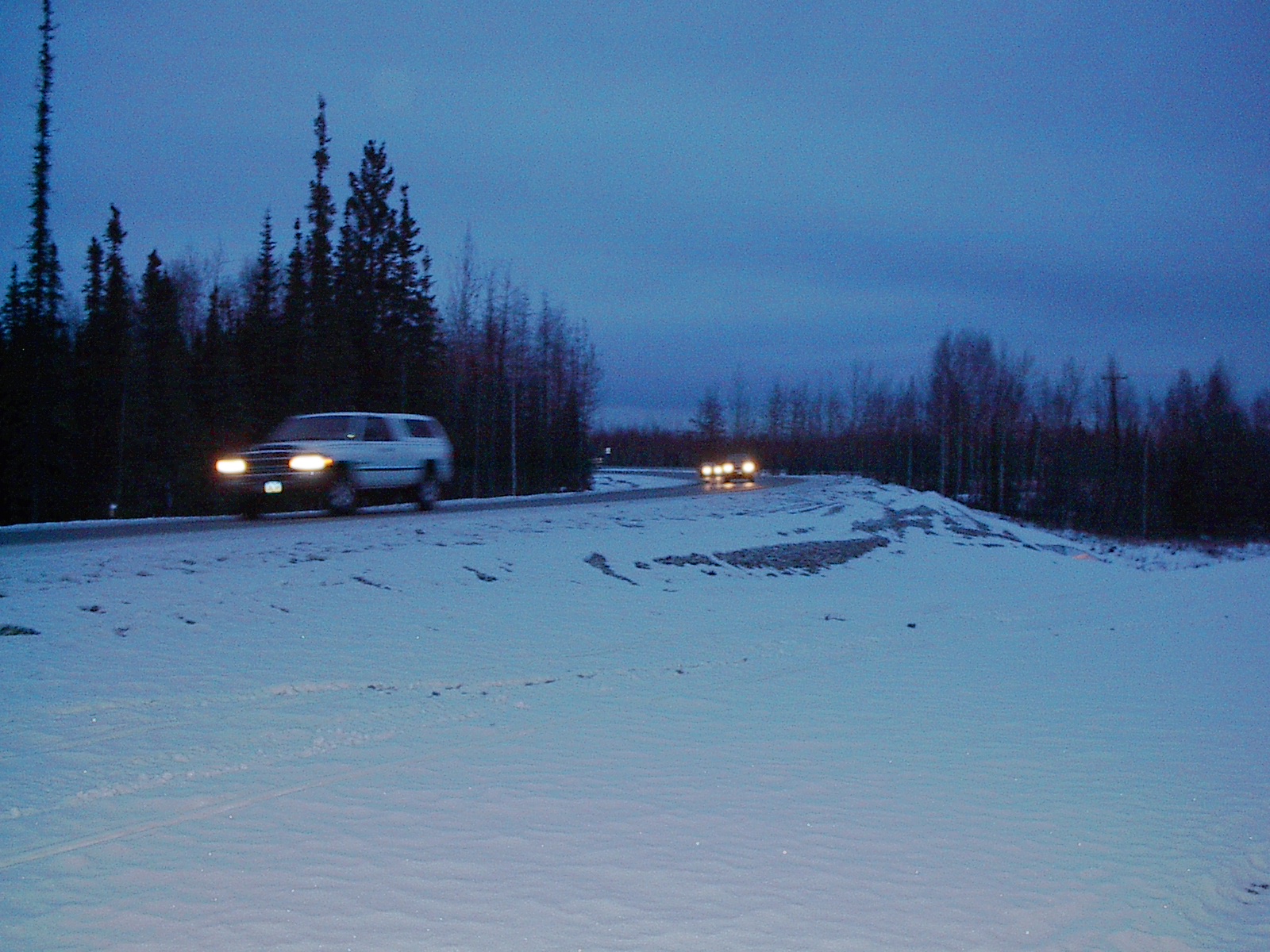|
|

Temporary North Bound On Ramp (Badger Road)
|
|
In order to get a better idea of what kind of friction coefficients are used in Alaska, we can look at the Badger Road Interchange construction project on the Richardson Highway². The nortbound on ramp (from Badger Road) will have a speed limit of 35 mph
a radius of 135 meters and a superelevation of 5.5%. From this data one may find the friction coefficient, (µ) to be equal to 0.10. Another example taken from the same project, observed from the off ramp in the south bound lane will have a radius of 253 meters, a super of 6% and a speed limit of 45 mph
µ was observed to be 0.09, which is just enough traction to make these corners at the posted limit. A friction coefficient that small leads the author to assume the engineers designed these turns to be taken under extremely slick conditions. Of course, we will not have a friction coefficient that low year round, in fact, for a normal summer day we would expect a coefficient of friction to be around 0.4-0.5³. If we looked at the maximum speed for this coefficient of friction on the same off/on ramps we have 60 mph
and 81 mph
Respectively. If an operator encounters these turns with a velocity different than what is posted, it would not only be unnatural for the car and driver, it would be unsafe as well. Using the Free Body Diagram, one can easily derive these equations using (V) for maximum velocity, ( Ff ) Friction force, (µ) Friction coefficient), (x) is the angle required, R for the radius length, and finally for Gravity use either 9.81m/s^2 or 32.2ft/s^2 depending on units. Here are the derived equations:
µ = {V^2 / ( Rgcos(x) )} tan(x)
V = {(Rg( µcos(x) + sin(x) ) / (cos(x) - µsin(x) ) }^ ½
Home | Theory |
Coefficients | Max Velocities |
Free Body Diagram | Bibliography
|